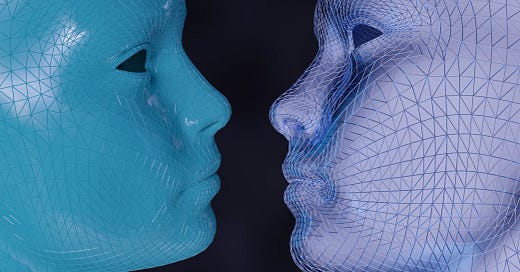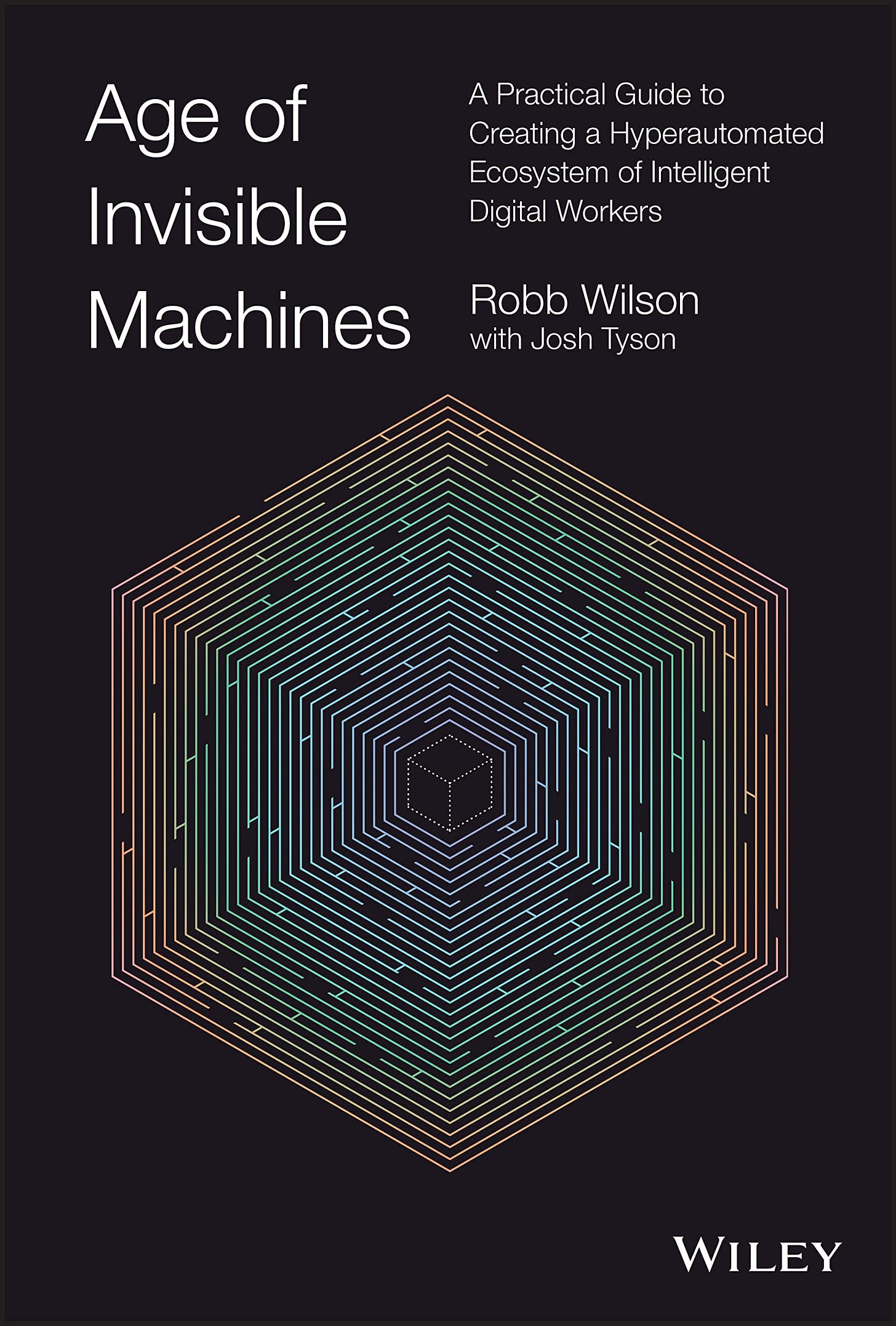The Conversational Fuss About AI
An Eye Opening Book On All The Chatter
Unsplash Photo Credit: Steve Johnson
In recent weeks I’ve just started to dip my toe into the groundbreaking developments around artificial intelligence. And I must say that what has emerged in just the past 12-18 months is pretty fascinating.
That being said, this period that we are in reminds me of the steep learning curve I faced in the early nineties when the internet was first beginning to shape. The conversations then were as they are now, full of debate, uncertainty, and a large degree of trepidation.
In this article, we will take a look at the rapidly developing world of conversational AI which involves the development of advanced technologies that enable computers and machines to engage in natural and meaningful conversations with humans. It’s a field that deploys chatbots, virtual assistants, and voice-activated devices, using natural language processing and machine learning to understand and respond to user inputs.
All this comes as Conversational AI is being applied in customer service, healthcare, education, and various other sectors to enhance user experiences and streamline interactions. As this nascent digital space evolves, it aims to achieve more human-like interactions in order to better understand context, emotions, and nuances in conversations.
Recently while visiting the iconic Tattered Cover bookstore in Denver, I found myself drawn to the book “Age of Invisible Machines: A Practical Guide to Creating a Hyperautomated Ecosystem of Intelligent Digital Workers,” by tech thought-leader Robb Wilson (with Josh Tyson). In it, Wilson delivers a stunningly insightful roadmap for leveraging conversational AI in the world of business, illuminating how this groundbreaking technology is changing the nature of every job at every company. If you either are or anticipate being impacted by AI in your work then check out this book.
The beauty of it is that it debunks common myths about conversational AI while exposing the inherent complexities tied to reimagining a business in this new era. Given this, Robb’s book in my view a must read for business entrepreneurs, corporate leaders, designers, tech enthusiasts, and anyone else with a stake in the future of business.
Author Robb Wilson is the founder, lead designer, and chief technologist behind OneReach.ai, the highest-scoring company in Gartner’s first Critical Capabilities for Enterprise Conversational AI Platforms report and a leader for Completeness of Vision and Ability to Execute in Gartner’s inaugural 2022 Magic Quadrant for Enterprise Conversational AI Platforms.
Raised under the tutelage of philosopher Marshall McLuhan—who predicted the Internet 30 years before it became reality—Robb has spent more than two decades applying his deep understanding of user-centric
design to unlocking hyperautomation. He built UX Magazine into the world’s largest experience design publication while simultaneously creating Effective UI, a full-service UX firm that competed with IDEO and Frog Design.
In addition to launching 15 startups and collecting over 130 awards across the fields of design and technology, Robb has held executive roles at several publicly traded companies and mentored colleagues who went on to leadership roles at Amazon Alexa, Google, Ogilvy, GE, Salesforce, Instagram, LinkedIn, Disney, Microsoft, Mastercard, and Boeing.
Robb puts the same passion into building a surfboard and renovating his home that he instills in the start- ups he routinely bootstraps without venture or third-party capital. A trusted thought leader in the realm of conversational AI and hyperautomation, he has played a part in creating a wide variety of products, apps, and movies that have touched nearly every person on the planet.
Robb is also a humble husband, father, and grandfather. In an exclusive interview, Robb talked to “Great Books, Great Minds” about all of the conversational chatter taking place in the world of AI and what it portends for the future. Here’s what he had to share.
Can you help us make sense of all of the recent media attention being given to AI in recent months?
Many of the technologies associated with AI have been in development for decades. People like me who’ve been working with AI all along have been anticipating the moment when everyone else would see what we’ve all been excited about all this time. GPT-1 was developed in 2018, but OpenAI putting a chat interface on the front end of their Large Language Model (LLM) in the form of ChatGPT is what turned the world’s attention on AI. So while this technology is certainly revolutionary, the progress hasn’t come overnight.
What can an average everyday person like me do to prepare for this?
The best way to prepare for this massive change in our relationship to technology is to start using it. OpenAI and plenty of other LLMs have made it easy for just about anyone to put AI to use in novel ways. Other Generative AI tools like Midjourney and DALL-E have revolutionized the way media is created, and many of them are accessible to anyone who wants to use them. Rather than banningChatGPT, business leaders should be setting guidelines around the use of LLMs and encouraging employees to find useful ways to use it.
What in your view are some of the biggest misconceptions being bantered about in the AI world amid its rapid emergence?
One of the most common misconceptions is the notion that AI will take away jobs and I suppose, by extension, our sense of purpose. While there are definitely jobs that AI is well suited to perform, they are often tedious roles with high turnover rates, like call center agents.
And what is your response to the growing fears and trepidation some have about its potential misuse?
My philosophy with this technology is that it should be used in ways that augment people’s abilities, not to replace them.
What does your day-to-day work life look like with respect to assisting clients in getting their arms around all of this?
Through my company, OneReach.ai, I’ve worked with enterprise clients to redesign their call centers in ways that improve both customer experience and employee experience. With one US retailer in particular, we’ve managed to achieve a 300% decrease in unanswered calls. This company receives over 30 million calls per year across more than 1,000 locations. Using LLMs along with other technologies, we’ve been able to create automations that either answer customer questions or route them to the person who can best assist them.
In what ways do you believe AI will become valuable to workplace teams?
AI is benefitting the employees in their retail locations by reducing the number of incoming calls. One company I know of has seen a large revenue boost from customers getting more facetime with sales representatives. Call center agents are also able to spend more time helping customers with higher-level requests, with the help of automated prompts that guide them toward faster, more favorable resolutions. These are the kinds of applications that put AI in the position of an ally, not a threat.
But how do we know that these advancements can be sustained over time?
Of course, there’s nothing that guarantees that this approach will win out, especially as companies scramble to implement short-term solutions that are aimed at cost cutting rather than improving experiences for customers and employees.
Your book “Age of Invisible Machines” in part explores the intersection between AI and UX. Can you share a bit about this theme and its importance?
I see conversational AI in particular as a natural extension of UX. In user experience design, the goal is to allow people to use technology in ways that create as little friction as possible. Over the years, there have been all kinds of influential designs and patterns that have made it easier for people to interact with machines, primarily through graphical user interfaces (i.e. screens). When designed properly, the ability to have a written or verbal conversation with a machine can be nearly frictionless.
Can you elaborate a bit further about these points?
This is where the real work comes in, however. Most of us have seen or experienced the hallucinations that ChatGPT and other LLMs conjure. They are built to predict the best possible responses to our prompts and will sometimes invent the answers they think best suit the request—conjuring names, places, and other details, like urls. The challenge is to use these LLMs as front ends to ecosystems that connect them to other pieces of technology and information. In essence, designers need to find ways to give AI more context so that they can complete increasingly more sophisticated and personalized tasks. On this trajectory, user experience surges forward.
In what ways do you believe your book can spark a fresh set of conversations about the future of AI and the emerging world of intelligent digital workers?
My hope is that it will help people understand what intelligent digital workers (IDWs) are capable of, we can jumpstart the important conversations that will shape the kinds of work we get them to do. This is why it’s important that as many people as possible get involved with this technology. We’re in a rare moment that will set us off on a highly disruptive trajectory. It’s up to us to set the course by finding ways to use technology that are equitable and beneficial to real people.
What about the capitalistic intent that is already evolving from all of this?
For people who are attached to specific ways to make money from this, this transition will be painful. People who are open to changing the way they perform their jobs will thrive, as they will be finding new ways for technology to remove tedium and uplevel their skills. In essence, by co-creating with IDWs we will be able to shape new roles that let people flex their natural gifts as creative problem solvers.
Besides your book are there any others that you would recommend to those seeking an informed perspective on AI?
Through the Invisible Machines podcast that I host with my Age of Invisible Machines co-author, Josh Tyson, I’ve had opportunities to speak to authors who are exploring some of these same ideas. We recently had a great conversation with Seth Godin, whose new book The Song of Significance is all about finding ways to free people from the trapping of tedium and burnout of work cultures that are fixated around productivity. Seth’s book isn’t specifically about technology, but we’re both focused on instituting systemic change around our relationship to work, and his message is a great compliment to the information in our book.
We also had a great talk with legendary researcher, professor, and author Don Norman, whose new book Design for a Better World explores a more thorough and holistic approach to design that starts with thinking about the sustainability of the resources needed for a product or experience and also accounts for the impact it will have once a user is done with it. That’s a simplistic explanation of the book, but I definitely agree with Don that we need to be more considerate with all aspects of design, especially when creating with technologies as powerful as those that make up AI.
How have books served as a vehicle for your own growth and development in today’s rapidly changing digital realm? And what authors/books/thought leaders have had the greatest impact on your own thinking and development?
I had the good fortune of growing up under the informal tutelage of Canadian philosopher Marshall MacLuhan. He was a good friend of my mother who lived down the street from us. And while he was more of a lovable but cranky uncle than a mentor, his thinking has been hugely influential in my work. One of my favorite tidbits about his books concerns the title The Medium is the Massage. There’s some disagreement on Wikipedia about the origin of the name, but his son told me that it came from a typesetter error.
The original title was “The Medium is the Massage,” which is a soundbite that’s often associated with his thinking about technology and media. When he saw the error, he embraced it. Massage correlated to “mass age” or the kind of massaging that different media can do to our brains. The book is also experimental on the inside, with collages in the layout and pages that are printed backward and can be read in a mirror. There’s something captivating to me about his playful, interactive approach to such heady subject matter.
What is your greatest hope in terms of what readers of your book “Age of Invisible” walk away with?
I believe that Invisible Machines have the power to impact our individual lives and society as a whole in deeply positive ways. This will require lots of people getting involved with this technology, testing its limits and designing safe and inclusive experiences that elevate people’s abilities in meaningful ways. The goal of our book was to give people a roadmap for creating IDWs and evolving their capabilities. We also wanted to provide lots of food for thought in terms of what this tech is capable of and what kind of safeguards and ethical concerns we should be focused on.
An Invitation From Diamond-Michael Scott:
“Great Books, Great Minds” is my full-time work and life passion, a labor of love fueled by the endless hours of work I put into researching and writing these feature pieces. So if you enjoy this digital newsletter, find it valuable, and savor world-class book experiences featuring epic authors and book evangelists, then please consider becoming a paid supporting member at $6.00 a month or $60.00/year.







